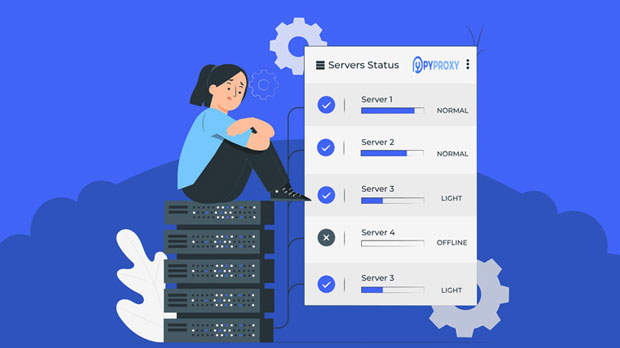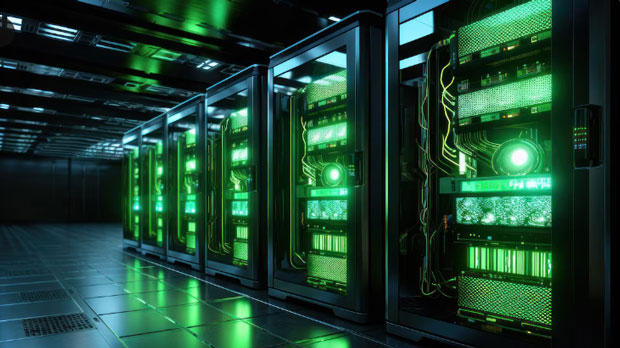In the era of high-speed internet and data-driven business environments, proxies have become crucial tools for improving the efficiency of online activities. Among these, PY sock s5 proxies are highly regarded for their reliability, flexibility, and performance in handling high-frequency access tasks. A socks5 proxy works by routing network traffic through a server, masking the user's real IP address, and providing greater anonymity. However, when it comes to high-frequency access tasks, such as web scraping, data mining, and automated testing, the performance of the proxy becomes a key factor. This article explores how PY SOCKS5 proxies perform under high-frequency access tasks, focusing on their reliability, speed, latency, and security. Understanding PY SOCKS5 Proxy: Basics and FeaturesBefore diving into performance specifics, it's essential to understand what a PY SOCKS5 proxy is and why it's preferred for high-frequency tasks. SOCKS5 is the latest and most advanced version of the SOCKS (Socket Secure) protocol, which facilitates communication between a client and a server through a proxy server. The key features that make PY SOCKS5 stand out include:1. Support for Various Protocols: SOCKS5 supports not only TCP and UDP but also allows more flexible and efficient handling of different types of network traffic.2. Authentication Support: Unlike earlier versions of SOCKS, SOCKS5 offers the option for proxy authentication, enhancing security when handling sensitive tasks.3. No Data Modifications: SOCKS5 proxies do not alter or inspect the data passing through, ensuring that tasks requiring the exact data integrity are handled without distortion.4. Anonymity and Privacy: One of the defining features of SOCKS5 proxies is their ability to mask the user’s IP address, providing greater anonymity and security for high-frequency access tasks.Factors Affecting Performance in High-Frequency Access TasksWhen considering the performance of any proxy, several factors can influence its efficiency, especially during high-frequency access scenarios. These include latency, connection stability, bandwidth, and overall reliability. Let's analyze how these factors interact with the PY SOCKS5 proxy.1. LatencyLatency refers to the delay before a transfer of data begins following an instruction. In high-frequency access tasks such as web scraping or automated API calls, low latency is crucial. Proxies inherently introduce some level of delay because they route traffic through additional servers. However, PY SOCKS5 proxies are optimized for performance, significantly reducing latency compared to other proxy types.Typically, the latency introduced by PY SOCKS5 proxies is minimal, making them suitable for tasks requiring real-time processing. This low latency ensures that high-frequency tasks, like sending thousands of requests per minute, are not hindered by sluggish connections.2. Bandwidth and SpeedBandwidth plays a critical role in determining the speed at which high-frequency tasks can be completed. The ability to handle large amounts of data traffic quickly is essential for tasks such as mass data scraping, testing APIs, or conducting real-time analytics.PY SOCKS5 proxies offer high-speed capabilities, providing more than sufficient bandwidth for high-frequency tasks. This makes them ideal for businesses or individuals who need to access large volumes of data or interact with servers on a frequent basis. The scalability of the bandwidth, often adjustable based on the user's needs, allows for greater flexibility in high-demand scenarios.However, the performance of a PY SOCKS5 proxy can vary depending on the number of simultaneous connections and the server’s location. Users should monitor these factors and select a proxy server closer to the target server to minimize speed losses.3. Connection StabilityFor high-frequency tasks, maintaining a stable and consistent connection is paramount. Frequent disconnections or timeouts can disrupt processes like web scraping or API calls, leading to incomplete or erroneous data collection.PY SOCKS5 proxies provide robust connection stability. They are designed to handle multiple connections simultaneously, ensuring that users can send a continuous stream of requests without interruptions. This makes them particularly effective for long-running tasks, such as data mining or automated testing, which require the proxy to remain connected without failure over extended periods.4. Reliability Under LoadHigh-frequency access tasks often require proxies to handle a large volume of requests within a short period. The ability to manage heavy traffic loads is a crucial metric for performance. Here, PY SOCKS5 proxies excel, as they are specifically designed to cope with high-demand environments without compromising performance.By distributing the load across multiple servers or balancing requests intelligently, PY SOCKS5 proxies can maintain a high level of performance even under significant stress. This is critical for tasks like load testing, where thousands of requests are sent to a server simultaneously.Security ConsiderationsWhile performance is key, security remains a top concern when using proxies for high-frequency tasks. Since these tasks often involve accessing sensitive data or interacting with third-party servers, ensuring a secure connection is essential.PY SOCKS5 proxies offer strong encryption and authentication methods, adding an extra layer of security. The ability to use username/password authentication ensures that only authorized users can access the proxy, preventing misuse. Furthermore, SOCKS5 proxies do not inspect or modify data, maintaining the privacy and integrity of the traffic.For tasks involving sensitive operations, such as financial data scraping or accessing private APIs, the added security features of PY SOCKS5 proxies make them a reliable option.Practical Applications of PY SOCKS5 Proxy in High-Frequency Access TasksPY SOCKS5 proxies are well-suited for a range of high-frequency access tasks, such as:1. Web Scraping: High-frequency scraping requires a proxy that can handle thousands of requests per minute without compromising speed or stability. PY SOCKS5 proxies are ideal for these tasks, ensuring that scraping operations are completed efficiently and without detection. 2. API Testing: API testing often involves sending a large number of requests to an API endpoint to check its performance under load. PY SOCKS5 proxies can handle these high-frequency requests while maintaining connection stability and speed.3. Data Mining: When extracting large datasets from the internet, it's essential to use a proxy that can manage heavy data traffic. PY SOCKS5 proxies offer the bandwidth and stability needed for data mining operations, ensuring that the process runs smoothly.4. Ad Verification: Monitoring digital advertising campaigns in real-time requires continuous, high-frequency access to websites and ad networks. PY SOCKS5 proxies can manage this traffic, allowing advertisers to track performance without being blocked.Conclusion: Is PY SOCKS5 the Right Choice for High-Frequency Access Tasks?Overall, PY SOCKS5 proxies offer excellent performance for high-frequency access tasks. They provide low latency, high bandwidth, robust connection stability, and strong security features. These attributes make them a powerful tool for a wide range of use cases, including web scraping, API testing, data mining, and ad verification. For users looking for a reliable and efficient solution to handle high-frequency tasks, PY SOCKS5 proxies stand out as one of the best options available. By leveraging the features of this proxy, users can enhance their online operations and achieve better results without facing significant performance bottlenecks or security risks.
Nov 13, 2025



































































